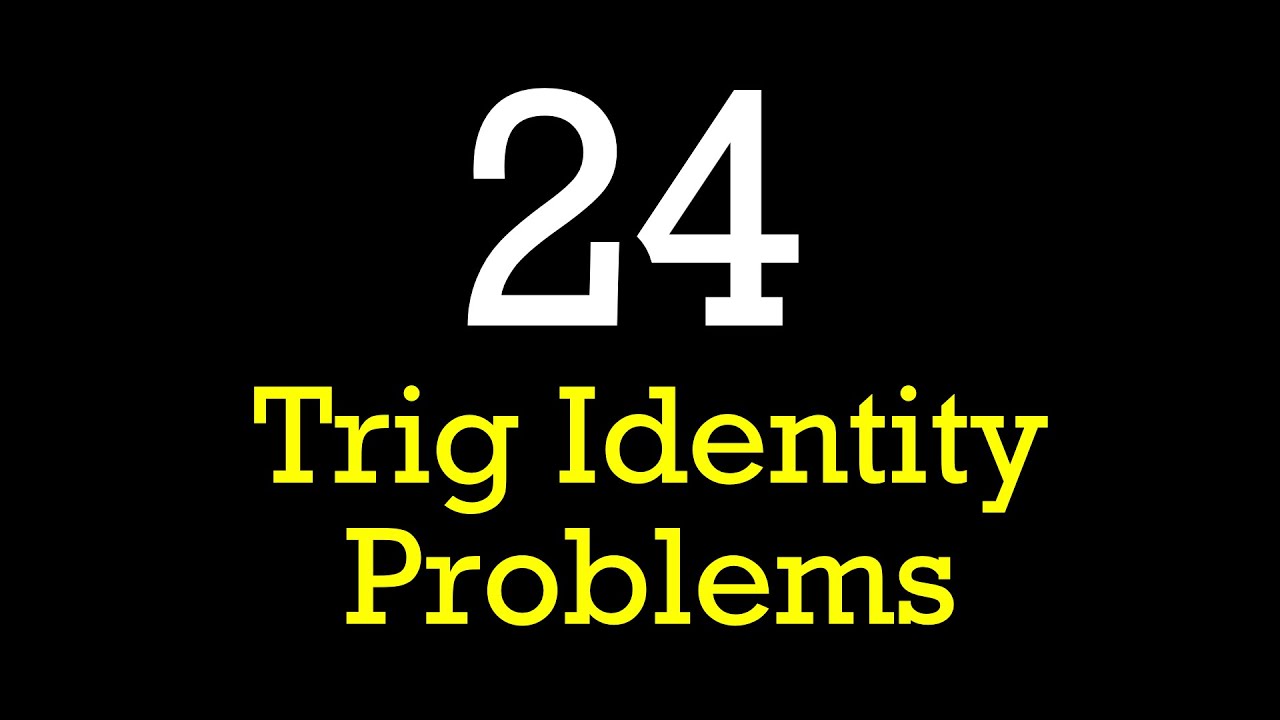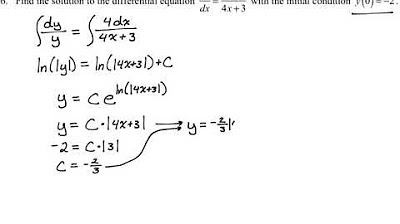ASVAB 2024 Mathematical Knowledge Practice Test
TLDRThe video script is a comprehensive guide for individuals preparing for the AZAB 2024, focusing on mathematical knowledge review. It encourages viewers to engage with the material by pausing the video to work through problems independently before comparing their solutions with the presenter's. The script covers a range of mathematical topics, including the area of a parallelogram, simplifying fractions, factoring quadratics, and applying the Pythagorean theorem. It also addresses algebraic operations such as distributing and combining like terms, solving linear equations, and understanding inequalities. The presenter emphasizes the importance of practice and provides resources for further study, aiming to refresh viewers' mathematical concepts and improve their problem-solving skills for the upcoming exam.
Takeaways
- 📚 This video serves as a mathematical knowledge review for the ASVAB 2024, focusing on problem-solving strategies.
- 🔢 Viewers are encouraged to actively participate by using a notebook and pencil to solve problems before watching the solutions.
- 📗 The video covers a range of topics, including areas of shapes (parallelograms, triangles), quadratic factors, and simplifying expressions.
- 💡 The tutorial introduces the FOIL method for multiplying expressions and uses it extensively to explain problem-solving steps.
- 📔 Techniques for adding and simplifying fractions with different denominators are demonstrated, emphasizing the importance of a common denominator.
- 🔫 Solutions for typical ASVAB math problems, such as factoring quadratics and calculating diagonals using the Pythagorean theorem, are provided.
- 🔍 Tips on eliminating incorrect answer choices quickly by checking mathematical properties are shared, which is crucial for timed tests like the ASVAB.
- 🔢 The presenter also addresses complex algebraic concepts, like calculating the sum of polynomials and understanding the concept of reciprocals.
- 📱 Viewers are directed to additional resources such as ASVAB tutoring websites and apps for further study and preparation.
- 💾 The content aims to refresh viewers' mathematical knowledge and problem-solving skills, preparing them for the actual examination.
Q & A
What is the formula for calculating the area of a parallelogram?
-The area of a parallelogram is calculated by multiplying the base by the height (Area = base * height).
How do you use the acronym FOIL to multiply two binomials?
-FOIL stands for First, Outer, Inner, Last. It is a method to remember the order of multiplying terms in each binomial: first terms, outer terms, inner terms, and last terms.
What is the process of finding a common denominator when adding fractions?
-To add fractions, you need to find a common denominator, which is usually the least common multiple (LCM) of the two denominators. Then, you multiply each fraction by a form of one (e.g., 1/1, 5/5) to make the denominators the same, and add the numerators.
How does the sign change when you multiply or divide both sides of an inequality by a negative number?
-When you multiply or divide both sides of an inequality by a negative number, the direction of the inequality sign reverses (e.g., if it was less than, it becomes greater than).
What is the Pythagorean theorem and how is it used?
-The Pythagorean theorem states that in a right-angled triangle, the square of the length of the hypotenuse (the side opposite the right angle) is equal to the sum of the squares of the lengths of the other two sides (a² + b² = c²). It is used to find the length of the hypotenuse or one of the other sides if the lengths of the other two sides are known.
How do you find the factors of a quadratic expression?
-To find the factors of a quadratic expression, you can use the reverse of the FOIL method. You look for two binomials that when multiplied together give the original quadratic. This often involves trial and error, ensuring that the product of the first terms and the product of the last terms match the given quadratic, and that the middle terms combine to form the middle term of the quadratic.
What is the formula for the area of a triangle?
-The area of a triangle is calculated by the formula: Area = (base * height) / 2.
How do you determine if an equation represents a straight line or a parabola?
-An equation represents a straight line if it is in the form of y = mx + b, where m is the slope and b is the y-intercept. If the equation includes a squared term (e.g., x²), it represents a parabola.
What is the definition of a reciprocal and how do you find it?
-A reciprocal of a number is another number which, when multiplied by the original number, results in a product of one. To find the reciprocal of a fraction, you simply invert the fraction (e.g., the reciprocal of 3/5 is 5/3). For a mixed number, you first convert it to an improper fraction before inverting.
How do you solve for a variable in a linear equation with one variable?
-To solve for a variable in a linear equation, you isolate the variable by performing operations on both sides of the equation to get the variable alone on one side. This may involve adding, subtracting, multiplying, or dividing by the same number (except zero).
What is the key rule to remember when solving inequalities?
-The key rule when solving inequalities is that if you multiply or divide by a negative number, you must reverse the inequality sign.
Outlines
📚 Mathematical Knowledge Review for AZAB 2024
The speaker introduces a mathematical knowledge review for the AZAB 2024, encouraging viewers to solve problems on their own before watching the solutions. The first problem involves calculating the area of a parallelogram with specific dimensions, using the formula base times height. The explanation includes a brief overview of the FOIL method for multiplying expressions and emphasizes the importance of understanding mathematical concepts and equations.
🔍 Simplifying Fractions and Factoring Quadratics
The second paragraph covers simplifying fractions by finding a common denominator and adding fractions accordingly. It also discusses factoring quadratics using the FOIL method and determining the correct signs for the factors. The speaker provides a step-by-step guide for factoring a quadratic equation and emphasizes the significance of algebra in solving mathematical problems.
📐 Applying Pythagorean Theorem and Multiplying Expressions
The third paragraph deals with applying the Pythagorean theorem to find the length of a rectangle's diagonal and multiplying expressions. It explains how to distribute a term across a set of parentheses and how to use the Pythagorean theorem to find the hypotenuse of a right triangle. The speaker also provides a method for solving equations involving multiple variables by substitution.
🧩 Summing Terms and Solving Equations
This paragraph focuses on summing terms in an algebraic expression and solving equations. The speaker explains the process of adding like terms and finding the sum of a set of algebraic expressions. It also covers solving equations by substituting known values to find unknown variables and emphasizes the importance of practice for mastering math problems.
📉 Identifying Non-Linear Equations and Solving Inequalities
The final paragraph discusses identifying non-linear equations among a set of linear ones and solving inequalities. The speaker explains how to differentiate between straight lines and parabolas by looking for squared terms. It also covers solving inequalities, highlighting the rule of reversing the inequality sign when multiplying or dividing by a negative number.
Mindmap
Keywords
💡Parallelogram
💡Arithmetic Reasoning
💡FOIL Method
💡Simplifying Fractions
💡Factoring Quadratics
💡Pythagorean Theorem
💡Distributive Property
💡Summation
💡Reciprocal
💡Substitution
💡Area of a Triangle
💡Graphing Equations
💡Inequalities
💡Order of Operations (PEMDAS/BODMAS)
Highlights
The video is a mathematical knowledge review for the AZAB 2024, providing problems and solutions.
It is recommended to have a notebook and pencil ready, and to pause the video to attempt the problems before watching the solutions.
The area of a parallelogram is calculated as base times height, using the formula (x + 3)(x - 5).
The acronym FOIL (First, Outer, Inner, Last) is used to remember the process of multiplying expressions together.
To simplify fractions, a common denominator is necessary, as demonstrated with the expression 3/5x + 1/x.
The factors of a quadratic can be found using the FOIL method, as shown with the example x^2 + 3x + 1.
When factoring quadratics, it's important to consider the signs of the terms to ensure they multiply to the correct constant.
To factor a quadratic, one must look for pairs of factors that multiply to the constant term and have the correct signs.
The length of the diagonal of a rectangle can be found using the Pythagorean theorem, as shown with a base of 4 and height of 3.
The sum of terms in an equation is found by adding the coefficients of like terms, as demonstrated with 3x^3, 2x^2 + 5x, and Ax^2 + Bx + C.
To determine which of several expressions does not equal nine when x equals four, a process of elimination is used.
The reciprocal of a mixed number is found by converting it to an improper fraction and then inverting the numerator and denominator.
When given an equation with two variables, one can solve for the other variable by substituting a known value, as shown with x + 3y = 7 and y = 2.
The area of a triangle is calculated as (base * height) / 2, regardless of the triangle's orientation.
Among a set of equations representing straight lines, the one with an x^2 term is a parabola, as it does not have a constant rate of change.
To solve an equation involving fractions, one must simplify the fractions and then solve for the variable, as shown with 4/3 * 34 = 5K.
The order of operations (PEMDAS) is crucial when solving mathematical problems, which stands for Parentheses, Exponents, Multiplication/Division, and Addition/Subtraction.
Inequalities are solved similarly to equations, but the direction of the inequality sign is reversed when multiplying or dividing by a negative number.
The video concludes with encouragement to practice and utilize resources such as tutoring apps for further study and improvement.
Transcripts
5.0 / 5 (0 votes)
Thanks for rating:





